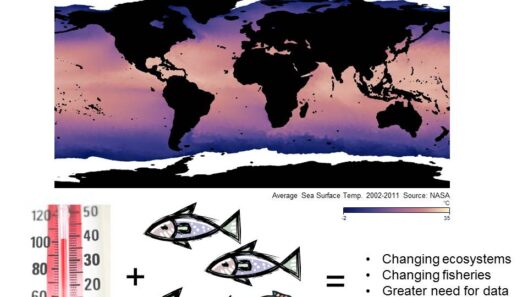The perils of global warming resemble an intricate web woven from the very threads of our daily lives—each strand a choice we make, a decision we live with. This web, though delicate in appearance, bears the weight of a looming crisis that threatens our biosphere. As the repercussions extend from melting glaciers to more frequent natural disasters, the question arises: how can we, as stewards of the Earth, lessen the harm that global warming inflicts upon our planet? This discourse explores salient and practical mitigation strategies that foster a symbiotic relationship between humanity and nature.
First and foremost, the cultivation of awareness and understanding is paramount. Arm yourself with information about climate change, its causes, and its far-reaching effects. Engaging in community discussions, attending seminars, and reading credible literature can serve as fertile ground for an informed citizenry. Like the first rays of dawn dispelling the darkness, knowledge illuminates pathways to sustainable practices that can collectively mitigate global warming.
Transitioning to renewable energy sources is a pivotal action item. The sun, a celestial titan, offers us boundless energy through solar panels, while the wind whispers its power to be harnessed via wind turbines. By shifting our reliance from fossil fuels to renewable energy, we diminish the carbon footprint we leave on our fragile environment. Whether it’s through installing solar panels on rooftops or advocating for wind farms, embracing these technologies is like planting seeds in barren soil—each effort ripens into a harvest of cleaner air and a healthier planet.
Equally important is energy efficiency, a conversation that echoes through the halls of conservation. By utilizing energy-efficient appliances and adopting mindful consumption practices, we can significantly reduce our energy usage. For instance, LED lighting, when compared to incandescent bulbs, consumes a staggering 75% less energy while providing superior illumination. Incorporating smart thermostats can also adapt heating and cooling to our needs, curbing unnecessary wastage. Each small switch we make is a step toward retreating from the precipice of environmental decline.
An equally vital dimension to consider is transportation—our intricate dance through urban landscapes. The combustion engines that roar through the streets contribute hefty volumes of greenhouse gases. Thus, embracing alternative transportation modes—be it biking, walking, carpooling, or using public transit—can significantly mitigate our individual carbon footprints. Electric vehicles are emerging as shining beacons in the automotive industry; they not only reduce emissions but also herald a future where transportation can harmonize with environmental sustainability.
In an era where climate change disproportionately affects our agricultural systems, adopting sustainable farming practices becomes indispensable. Regenerative agriculture—entailing crop rotation, cover cropping, and agroforestry—enhances soil health and sequesters carbon in the earth. This method does not merely aim to optimize yield; it fosters a resilient ecosystem, akin to a mighty tree with deep roots, able to withstand the storms of climate change. Supporting local and organic farmers can serve as a lifeline, allowing consumers to directly contribute to a more sustainable food system.
Moreover, the importance of lifestyle alterations cannot be overstated. A diet rich in plant-based foods significantly reduces one’s ecological footprint. Livestock farming is a potent contributor to methane emissions, a greenhouse gas with a warming potential many times that of carbon dioxide. Shifting toward a diet that prioritizes fruits, vegetables, and grains can alleviate some extent of this burden. Each meal becomes an opportunity to nourish our bodies while simultaneously caring for the planet—a harmonious sacrifice that serves as an antidote to a proliferating issue.
In conjunction with these lifestyle alterations, enhancing water conservation practices is imperative. Water, a precious elixir, is being squandered with reckless abandon. Installing low-flow fixtures, fixing plumbing leaks, and employing mindful watering techniques in gardens are simple yet impactful changes. Much like the meticulous conservation of our time, conserving water is a testament to our respect for this finite resource. It nurtures our ecosystems, protects aquatic wildlife, and fortifies the resilience of our communities against climate variability.
Additionally, the act of reforestation presents a profound opportunity for mitigation. Trees, nature’s air purifiers, absorb carbon dioxide and release oxygen, playing a critical role in maintaining atmospheric balance. Engaging in local reforestation efforts or supporting organizations dedicated to tree planting can create a powerful ripple effect in combating climate change. Each sapling nurtured is akin to a lifeline thrown to a struggling planet, offering hope to an environment in distress.
Lastly, we must foster connections within our communities to advocate for climate policy. Grassroots movements and advocacy for policies promoting renewable energy, emissions reduction, and environmental justice are essential. Collaborative efforts, much like a symphony, create a powerful soundscape where voices united can prompt change at local, national, and global levels. Engaging in activism—whether through volunteering, petitioning, or communicating with representatives—fortifies the collective spirit that can uplift our environment from the brink of crisis.
In sum, mitigating the harmful effects of global warming is not the sole responsibility of any single entity; it is a collective endeavor requiring diligence, creativity, and commitment. By equipping ourselves with knowledge, adopting sustainable practices in energy use and transportation, realigning our dietary habits, conserving resources, reforesting, and advocating for policy change, we embark on a transformative journey pivotal to our very existence. Just as the threads of the web require delicate handling to prevent unraveling, so too do our actions weave the fabric of a sustainable future. Through concerted effort, we can generate a momentum that reverberates through generations, echoing the resounding message that a healthier planet is not only possible but achievable.







